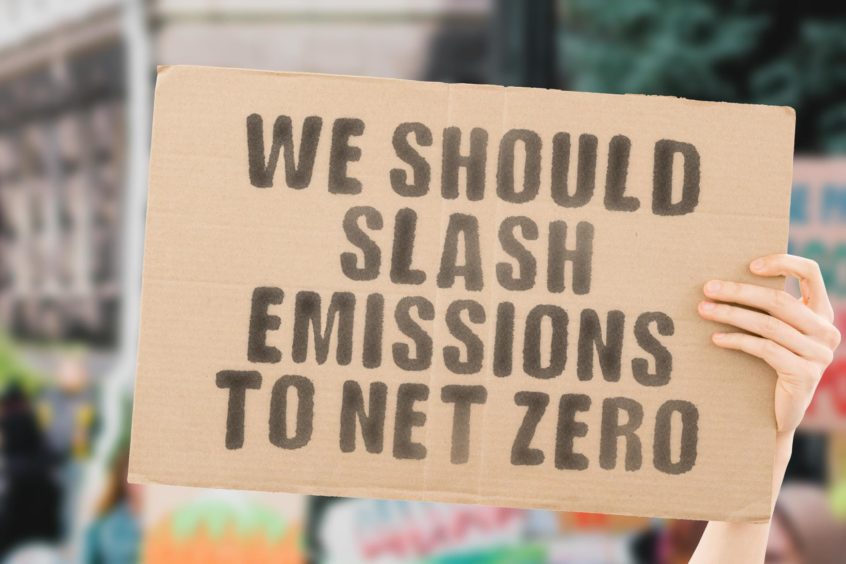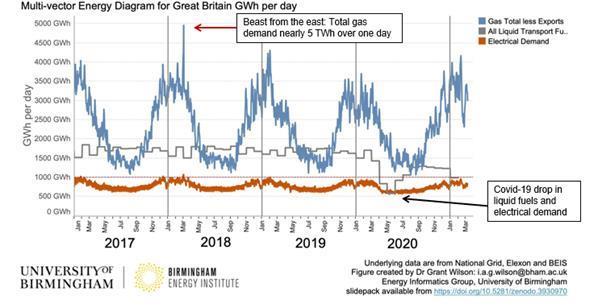
It is widely accepted that the way we fuel our cars, heat our homes and generate power, needs to change if we are to meet our decarbonisation commitments and address the developing climate crisis.
An initial emphasis on electricity-based solutions has promoted the rise in popularity of electric cars, and more recently installation of heat pumps in homes.
However, questions remain over how we might determine an optimal, deliverable balance between low-carbon technologies and disparate end-use solutions to ultimately achieve net zero.
The electricity vs gas context
First and foremost, it is important to set the UK’s net zero target for its energy system within the context of existing energy consumption and system operations.
The Department for Business, Energy & Industrial Strategy (BEIS) figures for 2019 indicate that electricity accounted for only 17% of the UK’s total energy consumption compared with approximately 30% and 50% for natural gas and petroleum products respectively. Natural gas was also used to fuel some 40% of the electricity produced.
In total, only around 9% of the total UK energy consumption in 2019 was obtained from indigenous low carbon electricity sources including hydro, wind, solar (2.0%), nuclear (3.8%) and bioenergy (3.2). With bioenergy contributing a further 4.6% through direct usage as a fuel.
If we are to achieve net zero by the 2050 deadline, we need net zero energy system designer and integration roles: groups of engineers, economists and other subject matter experts who can look holistically at the complex challenge to contrast and compare all the UK’s energy system aspects technically and objectively rather than looking through either an electricity or gas lens individually. If we assess systems in siloes and don’t adequately assess whether legacy technical principles can be applied to a new net zero based paradigm then the risk that we fail to achieve net zero by 2050 will be increased.
As well as a net zero designer and integrator, an energy regulator focused on 2050 delivery is also anticipated to be necessary, operating separately from and holding higher authority than Ofgem’s present role considering successive rolling five-year cycles.
The demand characteristics
Secondly, different end-use energy demand characteristics for electricity, gas (predominantly for heat) and petroleum (largely for transport) have different profiles and characteristics – which has driven the development of different capacities and capabilities.
While the annual end-use energy demand for gas in 2019 was less than double that for electricity, the greater variance in heat demand meant that at 214 GW, the peak demand for gas was around five times the maximum electricity demand of 53 GW in the ‘Beast from the East’ scenario in February 2018. At the same time, the gas network was also supporting the dispatch of combined cycle gas turbine power plants to produce electricity.
Furthermore, the increase in heat demand between 5am and 8am in 2017 and 2018 was regularly in excess of 100 GW, with a maximum of 116 GW recorded in February 2018. The highest corresponding electricity demand increase was 16 GW.
As Figure 1 below shows, the UK’s gas network is therefore capable of not only supplying a higher energy demand, but also significantly higher peak demand and variations in instantaneous demand.
The operating characteristics
Thirdly, we need to account for the disparate operating characteristics of our energy systems to engineer a holistic, low carbon solution which is technically feasible.
Natural gas and petroleum products provide potential energy (as molecules of fuel). Allowing some disconnection between the supply and demand of energy and providing the ability to store and/or produce fuel for use when it is likely to be required.
In contrast, the electricity system supplies kinetic energy (as electrons). Electricity supply and demand must be constantly and instantaneously balanced within narrow voltage and frequency tolerances to maintain operations and prevent a system ‘black out’.
This drives the use of parallel paths for electricity supply to avoid disconnection when system maintenance is being carried out or due to faults such as lightning strikes.
In practice this has meant that despite developing more infrastructure in the UK and in a far more visible form compared with the gas system, the electricity system can supply less energy to end users.
A deliverable hybrid system
While the decarbonisation of the electricity system in the UK has been a success, this most visible progress has only addressed the tip of the proverbial iceberg in terms of decarbonising the entire energy system. To deliver our ultimate net zero target, we will need to develop a hybrid solution. A solution which analyses the circumstances of each energy requirement and selects the appropriate energy vector; optimising the use of our present energy infrastructure and taking account of the constraints discussed in this analysis.
Due to the much lower energy transfer and peak capacity offered by the electricity system, we should consider being selective in the application of electrification solutions – to conserve this capacity to enable the transition of energy demand which is most appropriate to electrify. Balanced with the potential ability to leverage the greater capacity inherent in the gas network to support the transition to decarbonisation for other aspects of our energy system.
Recommended for you

 © Supplied by Costain/Birmingham E
© Supplied by Costain/Birmingham E